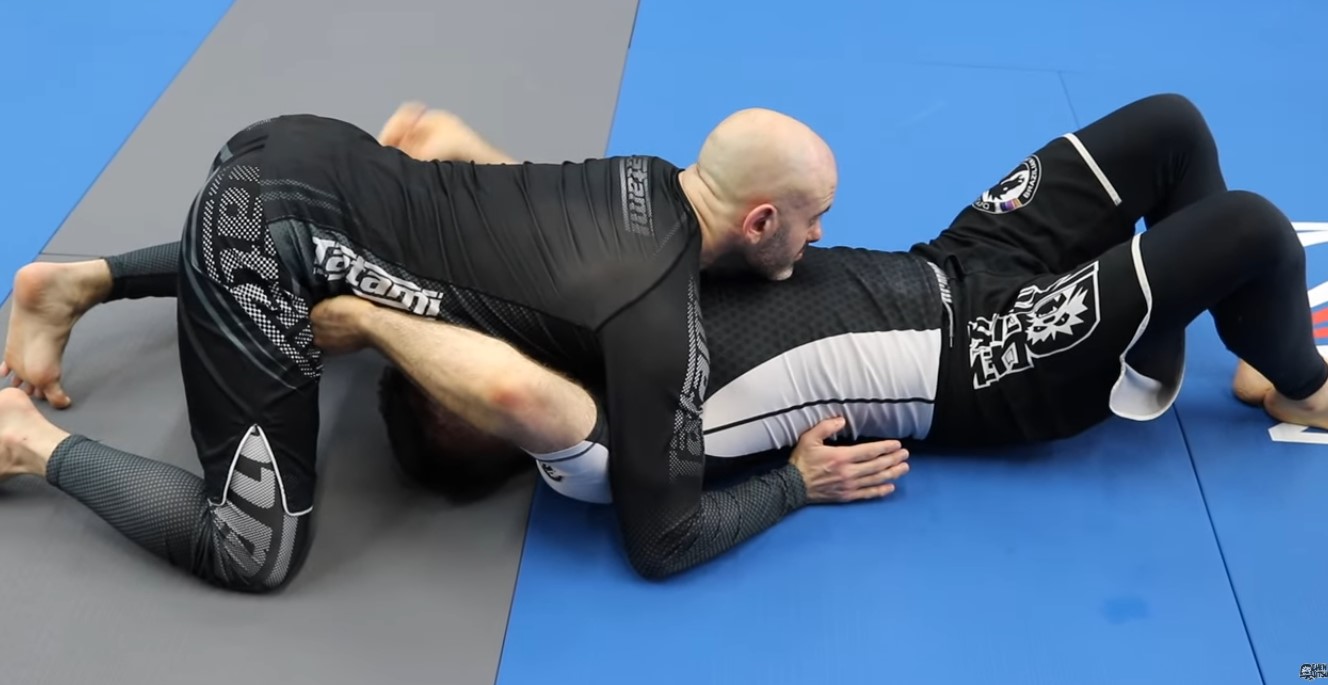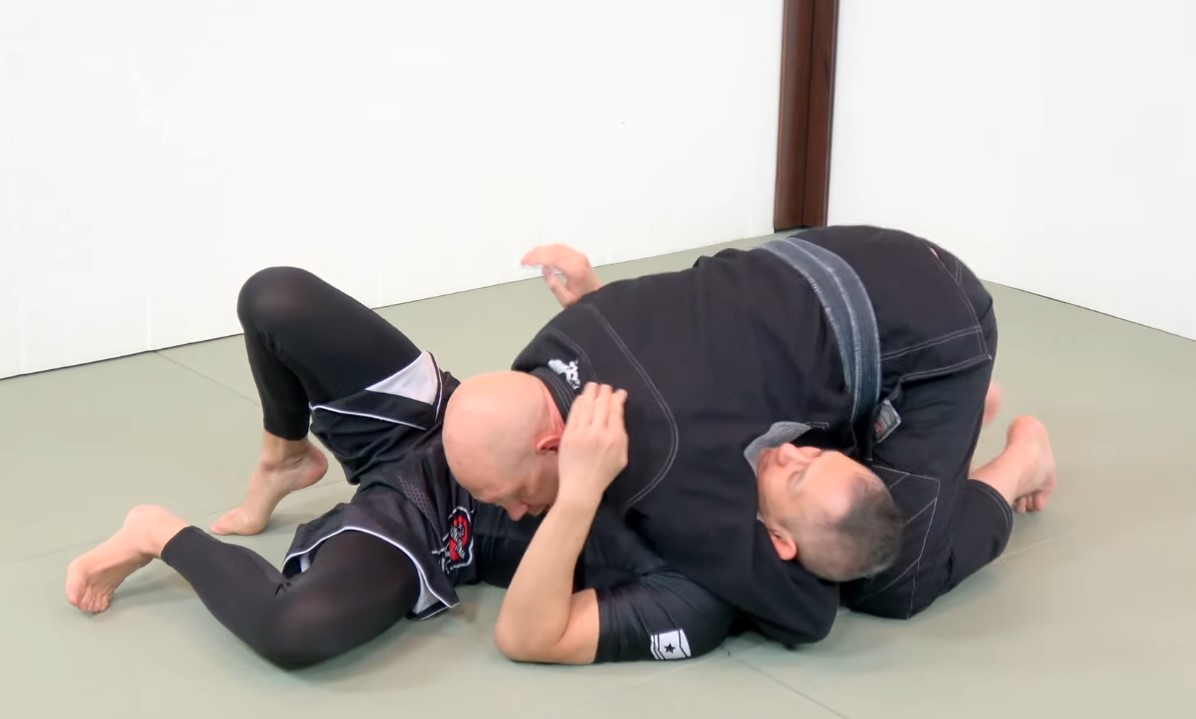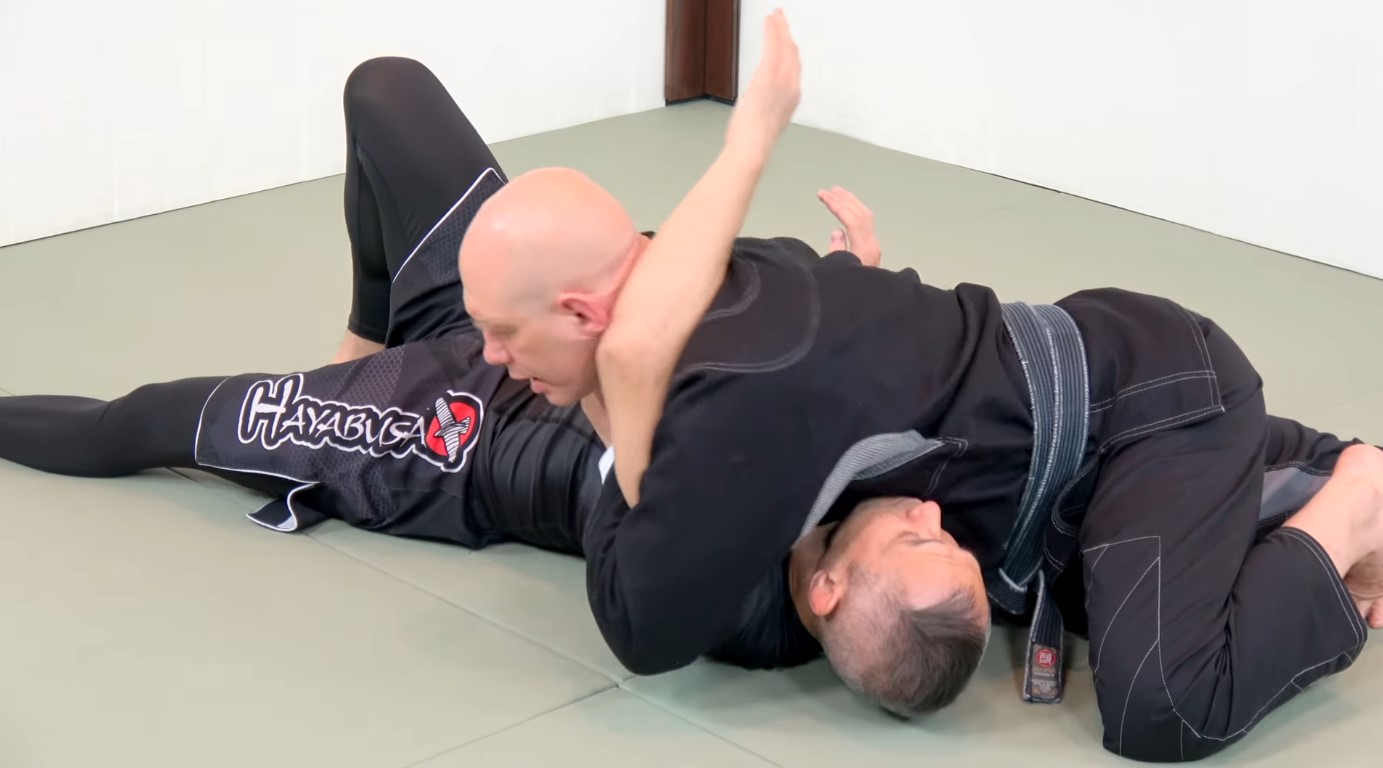Steve MarlinPosted:
Category:
BJJ.

The north-south position in BJJ is when you’re on top, facing your opponent’s head, with your chest over their face or upper body. Your knees or hips pin their shoulders, keeping them stuck.
It’s like sitting on their chest but turned 180 degrees. In BJJ, it’s a dominant spot, sitting between side control and full mount in the control hierarchy.
Why do I love it? It’s a position I stumbled into during a sparring session years ago, feeling like I’d found a secret weapon. It limits your opponent’s movement and sets you up for attacks or transitions. For beginners, it’s a great place to practice control while staying safe.
So you got into north south. Now what?
You don’t want to lose the position the second you get it.
Here’s how to stay on top and make life miserable for the person underneath:
When I first started, I’d forget to pin the shoulder. Big mistake.
The second I let up, my partner would turn into me and escape. Frustrating? Yes.
But once I locked that shoulder down and kept my hips low, things changed.
Suddenly, I wasn’t just surviving in north south, I was controlling it.
North south isn’t just about control. It’s also a setup for chokes.
Two main submissions come from here:
Let’s break them down.

You’ve probably seen this in MMA fights.
From north south:
It feels like someone’s squeezing your throat and collarbone at the same time.
I once tapped from this when I was still white belt. I thought I had control. Next thing I knew, I was seeing stars.
Don’t let that be you.
If you’re on top, squeeze slow and steady. No wild jerking. Let gravity and pressure do the work.

This usually comes after trapping the arm.
From north south:
It’s sneaky. You think you’re safe in north south, but suddenly your arm is being twisted behind your back.
Pro tip: Combine both attacks. Try the arm triangle, then switch to the kimura if they defend.
Good BJJ is about smooth movement between positions. Here are the transitions that work best for me.
The secret to good transitions: Never lose pressure. Your chest should always be heavy on your opponent. Think of it like rolling a heavy ball – smooth and constant.
So you’re stuck on your back, someone heavy is lying across you, and you feel like a turtle flipped on its shell.
Welcome to life on bottom in north south.
But you’re not helpless.
Here’s how to get out:
Your hips are your best friend.
Bridge your hips off the mat. Not too high, just enough to create a gap.
That tiny space lets you move your shoulders and start turning.
I used to bridge too hard and waste energy. Now I just pop up slightly and shift my weight.
They’re pinning your far shoulder? Fight back.
Shrug your shoulder up, then pull it forward. That breaks their control.
Once it’s free, turn toward them and shrimp out.
This was a game-changer for me. Once I figured out how to free that shoulder, escaping became easier.
If they let their head dip too low, grab it and pull it tight into your chest.
This throws off their balance and gives you leverage to turn out.
In gi, grabbing the collar helps you control their posture. Makes it harder for them to squeeze chokes.
Post both feet on the floor and push your hips away.
This creates distance and makes it harder for them to stay connected.
Try this combo:
Repeat until you’re out.
The north south position works in both gi and no-gi, but how you use it changes a lot depending on what you’re wearing.
Let me break it down for you with real-world examples from my own training:
| Aspect | No-Gi | Gi |
|---|---|---|
| Grips Available | You can grab limbs, head, or underhooks | You can grip lapel, sleeves, collar, and pants |
| How You Control Opponent | Use body weight, pressure, and underhooks | Use grips (like collar control) to manage posture |
| Submission Options | Arm triangles, kimuras, D’Arce chokes | Lapel chokes, arm triangles, kimuras |
| Speed of Movement | Faster – people move quicker to escape or transition | Slower – more control options slow things down |
| Choke Setups | Use your arms and neck pressure | Use the lapel to tighten chokes |
| Trapping Limbs | Harder to trap arms without fabric | Easy to trap one arm using sleeve or collar |
| Entry Style | More about timing and pressure | More about grip control before entering |
| Escape Difficulty (on bottom) | Tougher to escape due to pressure | Easier to create space with gi fabric |
| Training Gear | Rash guard and shorts | Uniform (kimono) with belt |
I remember one time I rolled in both gi and no-gi with the same partner in back-to-back rounds.
In no-gi, I had to stay glued to him. One inch of space and he’d shrimp out or reverse.
But in gi? I could control his collar, flatten him out, and take my time setting up the arm triangle.
It felt like having an extra hand.
So if you’re training in both styles, don’t treat north south the same way.
Change your plan based on what you’re wearing.
And always practice both sides – top and bottom – so you know how it feels to attack and survive in north south, with or without the gi.
If you’re still asking yourself, “Is north south really worth learning?”, my answer is a big yes.
It’s a control position that gets overlooked, but it’s simple, smart, and super effective when used right.
Whether you want to land sneaky submissions or just slow down the pace, the north south position can be your secret weapon, especially when everyone else is stuck thinking about side control or mount.
Start small. Try it during drills. Use it during rolls. And most of all, don’t be afraid to make mistakes. That’s how you learn.